In the ever-evolving landscape of military technology, the power and prowess of tanks continue to captivate and inspire awe. These armored behemoths, with their intimidating presence and devastating capabilities, represent the forefront of modern warfare. In this article, we will discuss the ins and outs of the top 10 of these formidable war machines. According to our research, the 10 most powerful tanks in the world are Leopard 2A7A1, M1A2 SEP Abram, K2 Black Panther, Challenger 2, Armata, Merkava Mk.4, Type 90, Leclerc, Oplot-M and T-90M.
Ranking criteria for most powerful tanks
The ranking presented in this article is the result of thorough analysis and meticulous evaluation of a diverse range of tank capabilities. Factors such as cutting-edge technology, innovative design, exceptional mobility, formidable firepower, and impregnable armor have been taken into account to ensure that these tanks stand unrivaled in their class. Every aspect of their performance has been carefully scrutinized, allowing us to present a comprehensive and reliable assessment of their power and dominance on the battlefield.
List of the most powerful tanks
Leopard 2A7A1, Germany
The Leopard 2A7A1, the latest addition to the esteemed Leopard 2 family, proudly represents Germany’s commitment to maintaining armored superiority. The Leopard 2 was initially manufactured in 1979 by Krauss-Maffei under the commission of the German Ministry of Defence. This formidable main battle tank (MBT) has garnered widespread recognition as one of the most advanced and potent tanks in the world. And that’s why Ukraine and its ally had repeatedly requested Germany to send Leopards to bolster their defense in the ongoing war against Russia. In a delayed but crucial move, Germany finally reached an agreement in January 2023 to dispatch a fleet of Leopards. [ Our article ‘What is special about Leopard 2 tanks?’ delves into the significance of Leopards within the context of the ongoing Ukraine-Russia War.]
Building upon the successes of its predecessor, the Leopard 2A6, the Leopard 2A7A1 boasts a series of notable enhancements that further elevate its capabilities on the battlefield. Let’s explore the key improvements that make the Leopard 2A7A1 an exceptional force to be reckoned with.
Recognizing the importance of robust protection, the Leopard 2A7A1 features an upgraded and modular armor system. This system can be further enhanced to counter a wide range of threats encountered in modern warfare. Additionally, the tank incorporates an active protection system (APS) that actively intercepts and neutralizes incoming projectiles, bolstering its defensive capabilities.
The Leopard 2A7A1 is equipped with a state-of-the-art fire control system, revolutionizing its targeting and engagement capabilities. With its thermal sight, laser rangefinder, and ballistic computer, the tank can accurately engage targets at long ranges, ensuring high precision and efficiency in combat scenarios.
A new weapon engagement system empowers the Leopard 2A7A1 to engage multiple targets simultaneously. This significant upgrade enhances the tank’s situational awareness and combat effectiveness, allowing it to dominate the battlefield with swift and accurate target acquisition. Supported by an advanced fire control computer, the tank achieves improved accuracy and target tracking.
The inclusion of an active protection system sets the Leopard 2A7A1 apart from its predecessors. This cutting-edge system intercepts and destroys incoming threats, adding an extra layer of defense to the tank’s formidable armor. With the active protection system, the Leopard 2A7A1 stands ready to neutralize enemy projectiles and safeguard its crew.
The Leopard 2A7A1 excels not only in its advanced features but also in its mobility. Powered by a 1,500 horsepower diesel engine, the tank achieves impressive speeds of up to 72 kilometers per hour. Its high level of mobility enables swift maneuverability across diverse terrains, ensuring operational flexibility and responsiveness in dynamic combat situations. With a range exceeding 450 kilometers, the Leopard 2A7A1 is capable of sustaining operations and can be efficiently refueled in the field.
M1A2 SEP Abram, United States

The M1A2 SEP Abrams stands as the epitome of the M1 Abrams main battle tank (MBT) lineage, representing the pinnacle of armored warfare technology within the United States Army. SEP, which stands for System Enhancement Package, denotes a series of continuous upgrades that have been meticulously implemented on this renowned tank over the years. The latest iteration, the M1A2 SEPv3, was introduced in 2020, solidifying the Abrams’ position as the most advanced version to date.
Equipped with a formidable array of advanced features, the M1A2 SEP Abrams sets a new standard in MBT capabilities. At the heart of its offensive power lies the 120mm smoothbore gun, which possesses the ability to unleash a variety of ammunition, including armor-piercing, high-explosive, and anti-tank guided missiles. This lethal firepower ensures that the Abrams tanks can effectively engage and neutralize a wide range of threats on the battlefield.
The tank’s state-of-the-art fire control system is a force to be reckoned with. Comprising a thermal sight, laser rangefinder, and ballistic computer, it empowers the crew with unparalleled target acquisition and engagement capabilities. With precise accuracy and high-resolution imagery, the M1A2 SEP Abrams can effectively engage targets at extended ranges, even in challenging environmental conditions.
Unyielding protection lies at the core of the M1A2 SEP Abrams’ design. Its advanced modular armor system provides enhanced safeguarding against a multitude of threats encountered in modern warfare. Additionally, the tank incorporates an active protection system (APS) that swiftly intercepts and neutralizes incoming projectiles, reinforcing its defensive capabilities and maximizing crew survivability.
In the age of interconnected warfare, the M1A2 SEP Abrams stands out with its digital battlefield network. This cutting-edge system facilitates seamless information sharing between the tank and other friendly forces, enhancing situational awareness, coordination, and the ability to adapt swiftly to changing battlefield conditions.
The M1A2 SEP Abrams is not just an incremental upgrade; it represents a paradigm shift in armored warfare capabilities. With its formidable armor, state-of-the-art fire control system, advanced weapon engagement capabilities, and active protection system, it poses a substantial threat to enemy armored forces. The tank’s ability to dominate the modern battlefield is a testament to the relentless pursuit of excellence and technological superiority by the United States Army.
The M-1 is named after General Creighton Abrams, who was a famous commander in World War II and later served as Army Chief of Staff from 1972 to 1974.
K2 Black Panther, South Korea
The K2 Black Panther, developed by the Agency for Defense Development (ADD) and manufactured by Hyundai Rotem, stands as South Korea’s triumphant leap in armored warfare. This main battle tank (MBT) was meticulously designed in the 1990s to fulfill the strategic requirements of the Republic of Korea Army, focusing on three-dimensional, high-speed maneuver warfare and network-centric operations. With mass production commencing in 2013, the K2 Black Panther swiftly earned its place among the South Korean armed forces, entering service in July 2014.
As one of the world’s most advanced MBTs, the K2 Black Panther boasts a remarkable array of technological features that position it as a formidable threat to enemy armored forces. Its core attributes are designed to optimize combat effectiveness across a wide range of operational scenarios, demonstrating South Korea’s commitment to maintaining a cutting-edge military industry.
Equipped with a formidable 120mm smoothbore gun, the K2 Black Panther showcases its firepower superiority by employing a diverse range of ammunition, including armor-piercing, high-explosive, and anti-tank guided missiles. These capabilities ensure that the tank can effectively engage targets with devastating accuracy, even in challenging weather conditions and at extended ranges.
The K2 Black Panther’s state-of-the-art fire control system encompasses advanced components such as thermal sights, laser rangefinders, and ballistic computers. This integrated system provides the tank’s crew with exceptional target acquisition and engagement capabilities, allowing them to neutralize threats with unprecedented accuracy, thus ensuring battlefield dominance.
The K2 Black Panther incorporates a modular armor system that can be upgraded to effectively counter various threats encountered on the battlefield. Moreover, the inclusion of an active protection system (APS) sets a new standard in defensive capabilities, intercepting and neutralizing incoming threats to safeguard the tank and its crew.
With its 1,500 horsepower diesel engine, the K2 Black Panther achieves remarkable speed and agility, reaching speeds of up to 70 kilometers per hour. This exceptional mobility enables rapid maneuverability across diverse terrains, providing the tank with the flexibility and responsiveness required for dynamic battlefield operations. Additionally, the tank’s impressive range of over 450 kilometers and the ability to refuel in the field further enhance its endurance and operational effectiveness.
Challenger 2, United Kingdom
The Challenger 2, introduced in 1998, is a British main battle tank (MBT) that serves as the successor to the Challenger 1. It is currently utilized by the British Army and the Royal Jordanian Army.
Equipped with a 120mm smoothbore gun, the Challenger 2 possesses the ability to fire various types of ammunition, including armor-piercing, high-explosive, and anti-tank guided missiles. The tank incorporates advanced sensors and systems that enable effective engagement of targets at long ranges and in diverse weather conditions.
With remarkable mobility, the Challenger 2 can achieve speeds of up to 55 kilometers per hour. Operated by a crew of four, it is powered by a formidable 1,200 horsepower diesel engine. The tank boasts a range exceeding 400 kilometers and can be refueled in-field, enhancing its operational endurance.
Distinguished as one of the most heavily armored tanks globally, the Challenger 2 relies on a combination of rolled homogeneous armor (RHA), Chobham armor, and spaced armor for exceptional protection. Furthermore, the tank features an active protection system (APS) capable of intercepting and neutralizing incoming threats.
Having actively participated in combat operations in Iraq and Afghanistan, the Challenger 2 has proven its reliability and effectiveness, successfully destroying numerous enemy tanks and vehicles.
The Challenger 2 ranks among the most robustly armored tanks worldwide, benefiting from a combination of rolled homogeneous armor (RHA), Chobham armor, and spaced armor. The tank’s active protection system (APS) further enhances its defensive capabilities, intercepting and neutralizing incoming threats.
The Challenger 2 integrates a cutting-edge fire control system comprising a thermal sight, laser rangefinder, and ballistic computer. This advanced system enables accurate engagement of targets at long ranges.
Equipped with an innovative weapon engagement system, the Challenger 2 can simultaneously engage multiple targets. The incorporation of a new fire control computer significantly improves accuracy and target tracking capabilities.
The Challenger 2 incorporates an active protection system (APS) designed to intercept and neutralize incoming threats. This active defense system represents a significant advancement over the passive armor utilized in previous iterations of the Challenger.
Considered a substantial upgrade over its predecessor, the Challenger 1, the Challenger 2 stands as one of the most capable MBTs worldwide. Its imposing capabilities pose a significant threat to enemy armored forces, solidifying its value as a prized asset for any military force.
Armata, Russia
The Armata, the first tank in a new family of armored vehicles being developed by Russia, is set to replace the T-90 as the backbone of the Russian armored forces.
Equipped with a 125mm smoothbore gun, the Armata showcases its versatility by being able to fire various types of ammunition, including armor-piercing rounds, high-explosive shells, and anti-tank guided missiles. Its advanced sensors and systems enable the tank to engage targets with precision and effectiveness across long ranges and in all weather conditions.
In terms of mobility, the Armata is highly agile, capable of reaching speeds of up to 70 kilometers per hour. Powered by a formidable 1,500 horsepower diesel engine, it offers a range of over 500 kilometers and the convenience of field refueling.
When it comes to protection, the Armata stands among the most heavily armored tanks worldwide. Its defense comprises a combination of composite armor, explosive reactive armor, and active protection systems. Furthermore, the tank incorporates a nuclear, biological, and chemical (NBC) protection system to ensure the safety of its crew.
The Armata’s advanced fire control system, featuring a thermal sight, laser rangefinder, and ballistic computer, grants superior accuracy and target engagement capabilities, even at extended distances. Its weapon engagement system allows for the simultaneous engagement of multiple targets, while the new fire control computer enhances accuracy and target tracking.
The inclusion of an active protection system (APS) on the Armata provides a significant improvement over the passive armor used in previous T-90 models, ensuring enhanced defense against incoming threats.
As a major upgrade over the T-90, the Armata boasts its position as one of the most capable main battle tanks worldwide. It poses a significant threat to enemy armored forces and stands as a valuable asset to any military, showcasing Russia’s commitment to advanced armored warfare capabilities.
Merkava Mk.4, Israel
The Merkava Mk.4, the fourth main battle tank (MBT) developed by Israel, entered service with the Israel Defense Forces (IDF) in 2004 and is currently the most advanced tank in the IDF’s arsenal. It is a heavily armored tank with a crew of four and is armed with a 120mm smoothbore gun, a 7.62mm coaxial machine gun, and a 12.7mm anti-aircraft machine gun. The tank is equipped with advanced sensors and systems, including a thermal imager, a laser rangefinder, and a navigation system.
One of the standout features of the Merkava Mk.4 is its exceptional survivability. It incorporates thick armor, a well-protected crew compartment, and an active protection system (APS) that can intercept incoming anti-tank missiles and rockets. These features make the tank highly resistant to enemy threats and difficult to destroy.
In addition to its impressive survivability, the Merkava Mk.4 boasts significant firepower. Its 120mm smoothbore gun can fire a range of ammunition, including high-explosive anti-tank (HEAT) rounds, armor-piercing discarding sabot (APFSDS) rounds, and high-explosive (HE) rounds. The tank is also capable of firing guided missiles, providing it with long-range engagement capabilities.
The Merkava Mk.4 has seen combat in several operations, including the 2006 Lebanon War and the 2014 Gaza War, where it performed admirably and proved its worth as a valuable asset to the IDF.
Overall, the Merkava Mk.4 is a highly capable tank that excels in survivability, firepower, and versatility. With its advanced features and proven performance in combat, it is expected to remain in service with the IDF for many years to come, solidifying its position as a cornerstone of Israeli armored warfare.
Type 90, Japan
The Type 90 tank, officially known as 90式戦車 (Kyū-maru-shiki-sensha), is a main battle tank (MBT) of the Japan Ground Self-Defense Force (JGSDF). It was designed and built by Mitsubishi Heavy Industries to replace the Type 61 tank and complement the existing fleet of Type 74 tanks. The Type 90 entered service in 1990 and is considered a third-generation tank, placing it on par with renowned tanks like the M1 Abrams, Leopard 2, and Challenger 2.
With a crew of three, the Type 90 is armed with a 120mm smoothbore gun, a 7.62mm coaxial machine gun, and a 12.7mm anti-aircraft machine gun. It is also equipped with advanced sensors and systems, including a thermal imager, a laser rangefinder, and a navigation system.
The Type 90 boasts several features that contribute to its formidable reputation. It possesses a well-protected crew compartment, a powerful engine, and a high-performance gun. Additionally, advanced systems such as an active protection system (APS) and a laser warning system make it challenging to neutralize on the battlefield.
While the Type 90 has been utilized in various training exercises, it has not seen combat. Nevertheless, it is widely regarded as one of the most capable tanks in the world and a significant asset to the JGSDF.
Leclerc, France
The Leclerc, a third-generation main battle tank (MBT) developed and manufactured by Nexter Systems in France, pays homage to Marshal Philippe Leclerc de Hauteclocque, a revered commander of the Free French Forces during World War II. Since its induction into the French Army in 1992, it has replaced the AMX-30 and has been exported to countries such as the United Arab Emirates and Jordan.
Equipped with a formidable 120mm smoothbore gun, the Leclerc possesses the capability to fire a wide range of ammunition, including HEAT, APFSDS, and HE rounds. Complementing its primary armament, the tank features a coaxial 7.62mm machine gun and a 12.7mm machine gun mounted on its turret, bolstering its defensive capabilities.
To ensure the safety of its crew, the Leclerc incorporates a combination of composite and spaced armor, offering substantial protection. Additionally, it features a nuclear, biological, and chemical (NBC) protection system, which safeguards against potential hazards in hostile environments.
Powered by a robust 1,500 horsepower diesel engine, the Leclerc demonstrates impressive mobility, reaching a top speed of 72 kilometers per hour. With a range of 450 kilometers, it possesses the endurance necessary for extended operations.
Considered one of the most advanced MBTs in the world, the Leclerc has garnered praise for its exceptional performance in exercises and operations. Its high mobility, reliable protection, and formidable armament contribute to its reputation as a top-tier tank.
Oplot-M, Ukraine
The Oplot-M, developed and manufactured by the Kharkiv Morozov Machine Building Design Bureau in Ukraine, is a main battle tank (MBT) that serves as an upgraded version of the T-84 Oplot. Its initial unveiling took place in 2008, showcasing the advancements made over its predecessor.
Armed with a potent 125mm smoothbore gun, the Oplot-M possesses the capability to engage targets with a variety of ammunition, including HEAT, APFSDS, and HE rounds. Complementing its primary armament, the tank features a coaxial 7.62mm machine gun and a 12.7mm machine gun mounted on the turret, providing additional defensive firepower.
To ensure the safety of its crew, the Oplot-M incorporates a combination of composite armor and spaced armor, maximizing its protection against various threats. Furthermore, it is equipped with a nuclear, biological, and chemical (NBC) protection system, safeguarding its crew in hazardous environments.
Propelled by a 1,200 horsepower 6TD-2 multifuel, six-cylinder, liquid-cooled diesel engine, the Oplot-M demonstrates exceptional mobility, reaching a maximum on-road speed of 70 km/h. With a range of 500 km, supplemented by additional fuel tanks, the tank exhibits the endurance necessary for sustained operations. Additionally, the Oplot-M features a diesel-electric auxiliary power unit, ensuring the availability of power for onboard systems even when the main engine is turned off.
Regarded as one of the most advanced MBTs in the world, the Oplot-M combines high mobility, robust protection, and a formidable armament. Its exceptional performance has garnered praise from military experts globally, solidifying its position as a vital component of the Ukrainian Army’s armored forces.
T-90M, Russia
The T-90M, an upgraded version of the T-90, is a Russian third-generation main battle tank (MBT) that entered service with the Russian Army in 2020. It represents a significant advancement over its predecessor and incorporates several notable upgrades.
The T-90M retains the formidable firepower of its predecessor, being armed with a 125mm smoothbore gun capable of firing various types of ammunition, including HEAT, APFSDS, and HE rounds. It also features a coaxial 7.62mm machine gun and a 12.7mm machine gun mounted on the turret, providing additional firepower against both ground and aerial threats.
In terms of protection, the T-90M incorporates a combination of composite armor and explosive reactive armor (ERA) to enhance its defensive capabilities. It also boasts a new nuclear, biological, and chemical (NBC) protection system, ensuring the safety of the crew in hazardous environments.
Powering the T-90M is a robust 1,500 horsepower diesel engine, granting it a top speed of 72 kilometers per hour (45 miles per hour). With a range of 500 kilometers (310 miles), the tank exhibits excellent mobility and operational endurance on various terrains.
One of the key upgrades in the T-90M lies in its advanced technological systems. It features a new fire control system equipped with a thermal imaging camera and a laser rangefinder, enhancing its targeting capabilities and situational awareness. The tank’s communication system has also been improved, allowing seamless coordination with other military assets. Additionally, a new navigation system enables the tank to navigate challenging terrains with ease.
The T-90M has garnered praise from military experts worldwide for its exceptional performance in exercises and operations. It is regarded as one of the most advanced MBTs globally, showcasing high mobility, formidable protection, and a powerful armament.
Summary of the top 10 most powerful tanks in the world
The top 10 most powerful tanks in the world in 2024 are
- Leopard 2A7A1, Germany
- M1A2 SEP Abram, United States
- K2 Black Panther, South Korea
- Challenger 2, United Kingdom
- Armata, Russia
- Merkava Mk.4, Israel
- Type 90, Japan
- Leclerc, France
- Oplot-M, Ukraine
- T-90M, Russia
These super-powerful tanks stand as testaments to human ingenuity and engineering excellence, each equipped with state-of-the-art features and weaponry that redefine the boundaries of battlefield domination.
While technological advancements undoubtedly play a vital role in a tank’s capabilities, it is the exceptional skills and teamwork of the crew that truly determine its effectiveness. The crew’s expertise, training, and ability to adapt are the catalysts that can transform a tank into a formidable weapon system. As such, the value of a top-notch crew should never be underestimated, as they are the driving force behind a tank’s triumph on the battlefield.


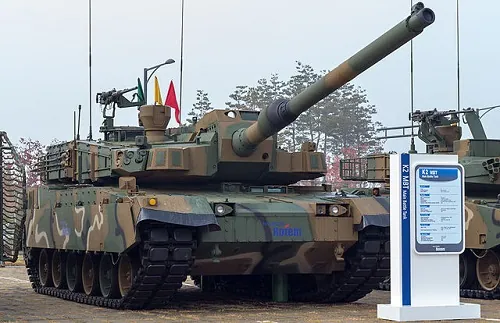
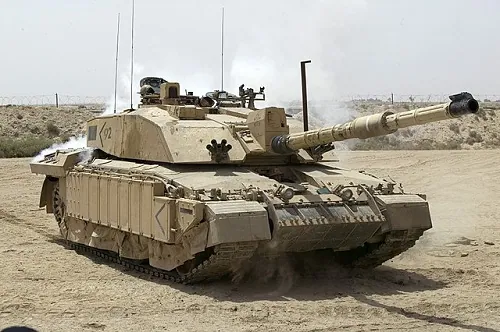
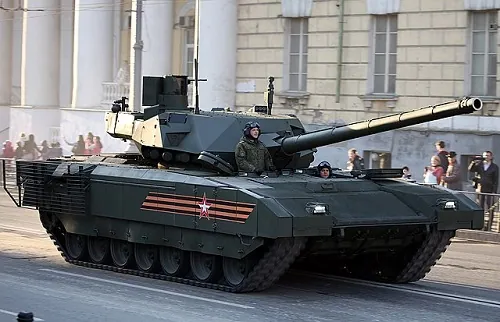


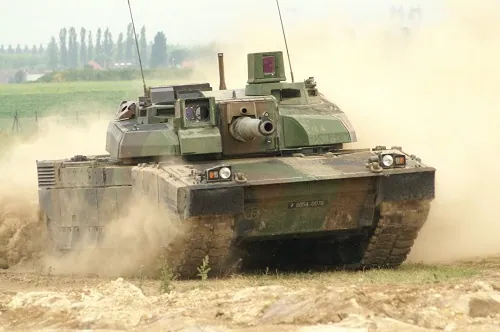
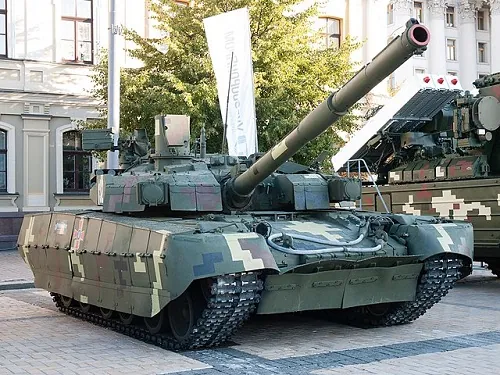
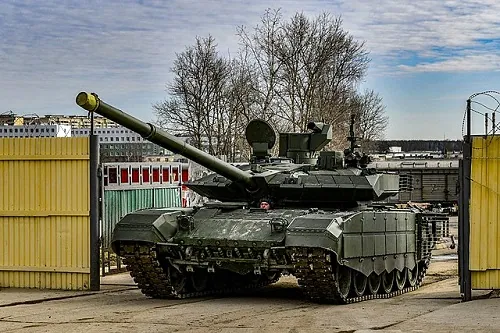

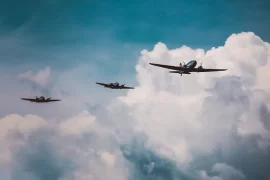

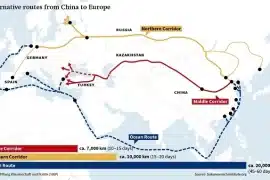
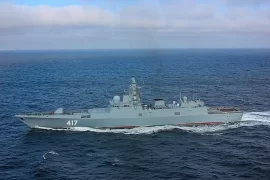


Hahahaha…yeah,we saw Leopards and Abrahams in Ukraine…hahahaha what a joke
What about China type 99???
You have the Russian T-90 on your list. I think you ought to look at the Ukrainian battlefield and re-evaluate.
Considering there only a handful of Armata T-14 prototypes in existence, and none are battle worthy. I can only assume that your site or page has swallowed Russian misinformation and propaganda. There is no way I could possibly give any credence to your opinions knowing that this so called tank basically does not exist.